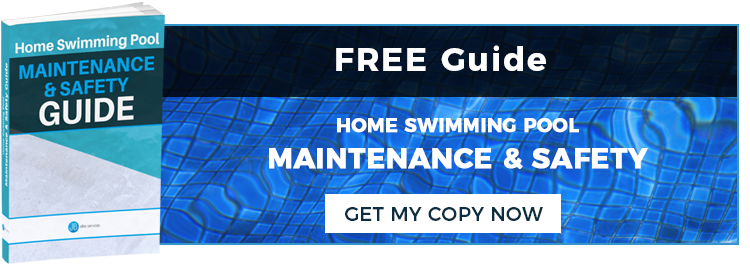pH is one of the secrets to a sparkling pool. Knowing what it is, and how to control it, can help to keep pool maintenance to a minimum. Here’s a quick guide to everything you need to know.

What Is A pH?
pH – otherwise known as the hydrogen ion concentration – is a chemical term that refers to the acidity of water. Solutions with a very low pH, such as battery acid and bee stings, are highly acidic. Solutions with a high pH are described as ‘alkaline’. Encountering a high pH can also be unpleasant; alkalines include drain cleaner and wasp stings. The ideal pH is therefore somewhere in the middle. The ideal swimming pool pH is 7.2.
Why Does Swimming Pool pH Matter?
When the pH of water is raised or lowered from its normal level, the water becomes reactive. This means that it will cause chemical changes to many of the materials that it comes into contact with. If the water is overly acidic, swimmers will feel a burning sensation on their skin, and – over time – the pool’s metal and lining will start to corrode. If the balance is tipped too far in the other direction, this can result in cloudy water.
pH changes will also affect chlorine. Alkaline water renders the chlorine ineffective, leading to an increased risk of algal blooms. As such, maintaining an ideal pH is a crucial element of pool maintenance.
What Can Alter My Pool’s pH?
Pools are remarkable feats of chemistry. This means that any organic and many inorganic materials can alter the water balance. Oils, rainwater, and leaves are primary contributors to pH changes. The ‘hardness’ of the water – which refers to how much calcium it contains – also plays an important role. Calcium reacts with water to slowly produce calcium hydroxide and hydrogen gas, both of which gradually decrease the pH of a pool.
How Can I Check My Pool’s pH?
Checking the pH of water is very straightforward. A simple home test kit will allow you to monitor the pH, and some advanced dosing systems will do this automatically. Many pool owners swiftly get a feel for the rhythm of their pool’s chemistry, and a quick dip of a test strip or electronic pH test becomes second nature. Most pool owners employ a professional to test and maintain the pH of their pool.
How Can I Change My Pool’s pH?
A reading that shows that the pool’s water balance has gone awry might sound alarming, but it is very straightforward to fix. Restoring the balance involves adding either acid or alkaline. If the pH test shows that the acidity has risen to a pH of 7 or below, sodium carbonate is the common choice for balancing. If the pH has risen too high, sodium bisulfate can be added as a balancing agent.
The amount that needs to be added will depend upon various factors, such as the volume of water, the amount of pH variance, and the chlorine levels. Your sodium bisulfate and sodium carbonate will include calculation instructions.
Always add balancing agents to the deepest part of the pool, and if making a major change to the pH level ensure that there is a 24 hour window before the pool is used again.
I’m Struggling With My pH Levels: What Should I Do Next?
All home swimming pools should be serviced at least once per year. This allows an expert to take a closer look at your water balance and troubleshoot any problems. If your pH is regularly wandering away from the ideal 7.2, contact a provider such as JB Elite for support.

